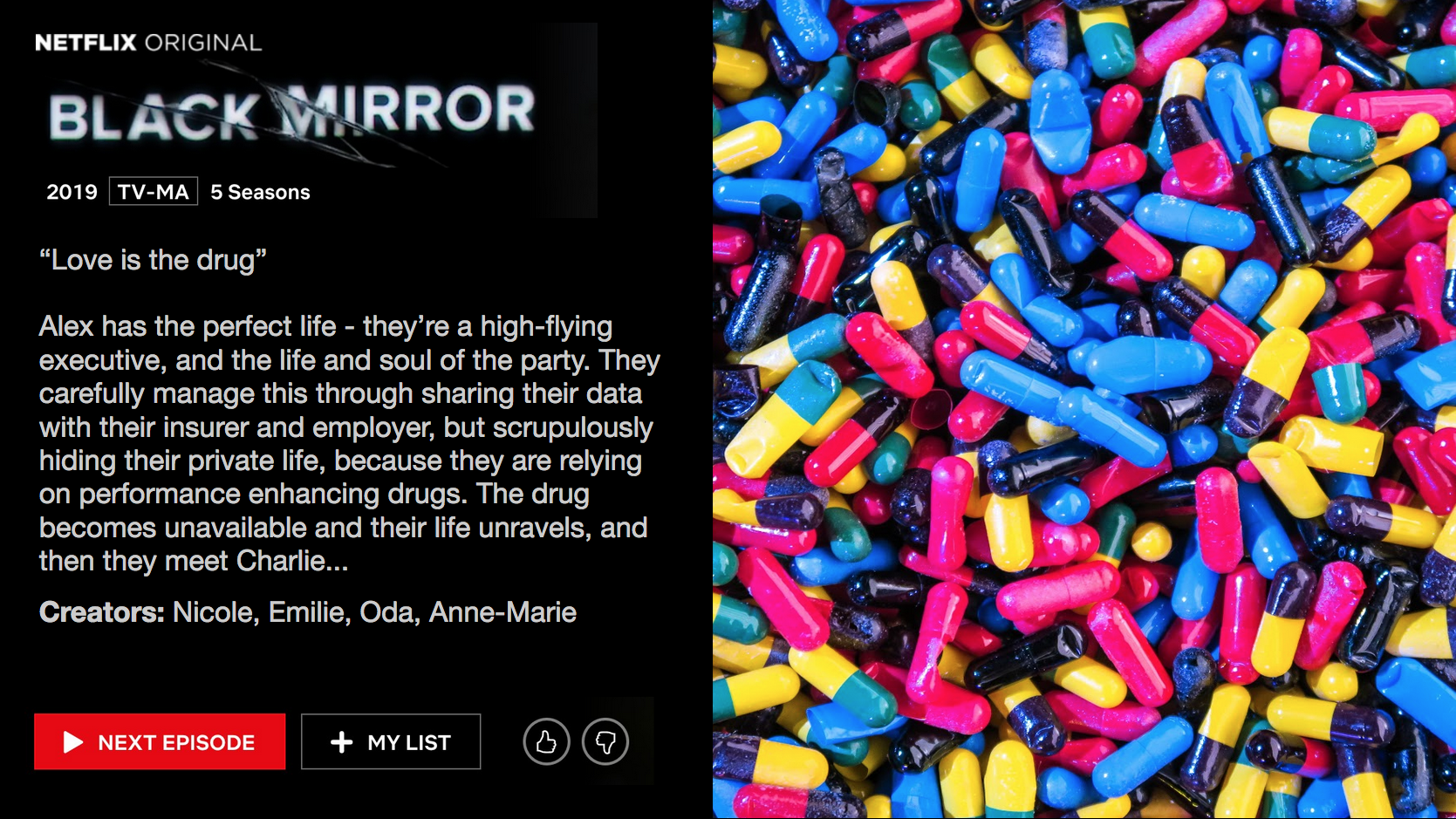I’ve got a whole host of stuff to blog from MozFest (and Accessibility Scotland), and I’m sure I won’t get to all of it, but here’s an attempt at least! One of the best sessions I went to at MozFest was the Black Mirror Writers Room session, run by Casey Fiesler.
Participants choose current technologies that they find ethically troubling, and speculate about what the next stage of that technology might be. We work collaboratively as if we were science fiction writers, and use a combination of creative writing and ethical speculation to consider what protagonist and plot would be best suited to showcase potential negative consequences of this technology. We plot episodes – but then also consider what steps we might take now (in regulation, technology design, social change) that might result in NOT getting to this negative future. We create plot summaries mocked up to look like Black Mirror episode decks, so that they can be shared widely. I use this exercise in teaching; here is a recent example: https://twitter.com/cfiesler/status/1144405445672497153
Goals of this session
To provide participants with a creative experience in thinking through the ethical implications of technology, and to create artifacts that can be shared more broadly to provoke further reflection (MozFest Session Description)
The Black Mirror framing lends itself really well to exploration of so many aspects of technology (I can see how one could go totally dystopian around TurnItIn and contract cheating – oh, hang a minute, we’re there already) but for this session we used privacy as the area to work on.
The session ran for an hour, which kept things tight and focused, but it was with an audience familiar with both Black Mirror and contemporary privacy issues. If you were re-using this with a more mixed audience then it would be worth considering making the session longer and priming it with a talk or some other materials on the specific topic area. Maybe also a few video clips from Black Mirror too.
Structure
Very roughly this is the structure we followed:
- Intro to session (10 mins)
- Working in groups of 3-4, discuss ideas, identify story and discuss plot details (30 mins)
- Write episode deck slide and choose image (5 mins)
- Each group report back (slides on screen; group give verbal overview of the “episode”) (15 mins)
Casey also then made the finished slides available after as a resource to return to.
Resources:
- https://tinyurl.com/mozblackmirror (our episodes)
- https://tinyurl.com/blackmirrorwritersroom (slides for running a session; intro including real headlines and complimentary BM episodes; some examples for topics; questions to use to design the plot; templates for the episode deck output)
There was mention in the session of licensing the slides as CC but there’s no attribution on the template, so I’d be tempted to modify the template in advance and put CC-BY on it at least. You could also use the image selection part of the episode design as a teaching opportunity around openly licensed image resources.
This was a great way for a group of us who hadn’t ever met before to think about some of the issues we all care about, and it seemed to work well for a multi-cultural audience. I’ve increasingly found speculative thinking or design exercises useful as a way to break out of the horrors / status-quo of right now. If you want to read about more about this, I really like “Speculative Everything” by Dunne and Raby. I have the dead tree version because I’m old fashioned, but seems like there’s a full version online here: https://readings.design/PDF/speculative-everything.pdf
It is hard to say what today’s dreams are; it seems they have been downgraded to hopes—hope that we will not allow ourselves to become extinct, hope that we can feed the starving, hope that there will be room for us all on this tiny planet. There are no more visions. We don’t know how to fix the planet and ensure our survival. We are just hopeful.
As Fredric Jameson famously remarked, it is now easier for us to imagine the end of the world than an alternative to capitalism. Yet alternatives are exactly what we need. We need to dream new dreams for the twenty-first century as those of the twentieth century rapidly fade. But what role can design play? (Beyond Radical Design, from Speculative Everything)

Oh oh oh I love this, I would definitely do this if I teach a class like Networked Narratives again. A followup activity might be to do a storyboard for a plot or even a teaser video?
The last time I taught I wanted to discuss the Nose Dive episode. But since it’s not available w/o Netflix, I made a pre-class assignment to learn anything about this episode from what they could find in reviews, etc, and as a class discussion we worked together to assemble the plot http://netnarr.arganee.world/week-4-0/ Then they had to create memes by either inserting an idea from the episode into the text of a popular meme or subvert a meme to make it about the episode http://make.arganee.world/assignments/nosedive-meme/
Again, I’d definitely do this kind of Black Mirror Writes in place of that.
Hi Alan – Glad you like it. It was so good and I think loads of people could use it really easily.
Brian Lamb has a totally genius idea about pairing it with Sava Saheli Singh’s “Screening Surveillance” films: https://www.screeningsurveillance.com
How cool would that be?!!